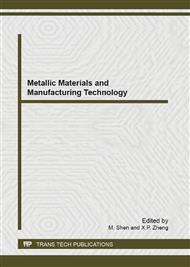p.110
p.117
p.122
p.126
p.130
p.134
p.138
p.141
p.147
Welding Defects Classification Based on Multi-Weights Neural Network
Abstract:
Incomplete fusion and incomplete penetration are two types of damage serious welding defects. These two kinds of defects have the similarity in the features in X-ray imaging. Identifying the two kinds of defects automatically and accurately can improve the welding technology and improve the quality of welding effectively. The causes of defects and features of X-ray images are described in the paper. The welding defects calssification method based on multi-weights neural network is put forward in the paper. The multi-weights neural network based on graphic geometry theory is introduced, which uses the geometrical shape in high dimensional space to cover the same class defect samples via constructing multi-weights neural network. The experimental results proved the effectiveness of the algorithm.
Info:
Periodical:
Pages:
130-133
Citation:
Online since:
September 2013
Authors:
Price:
Сopyright:
© 2013 Trans Tech Publications Ltd. All Rights Reserved
Share:
Citation:


